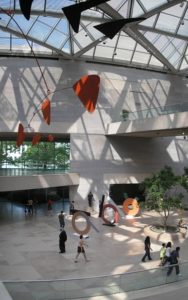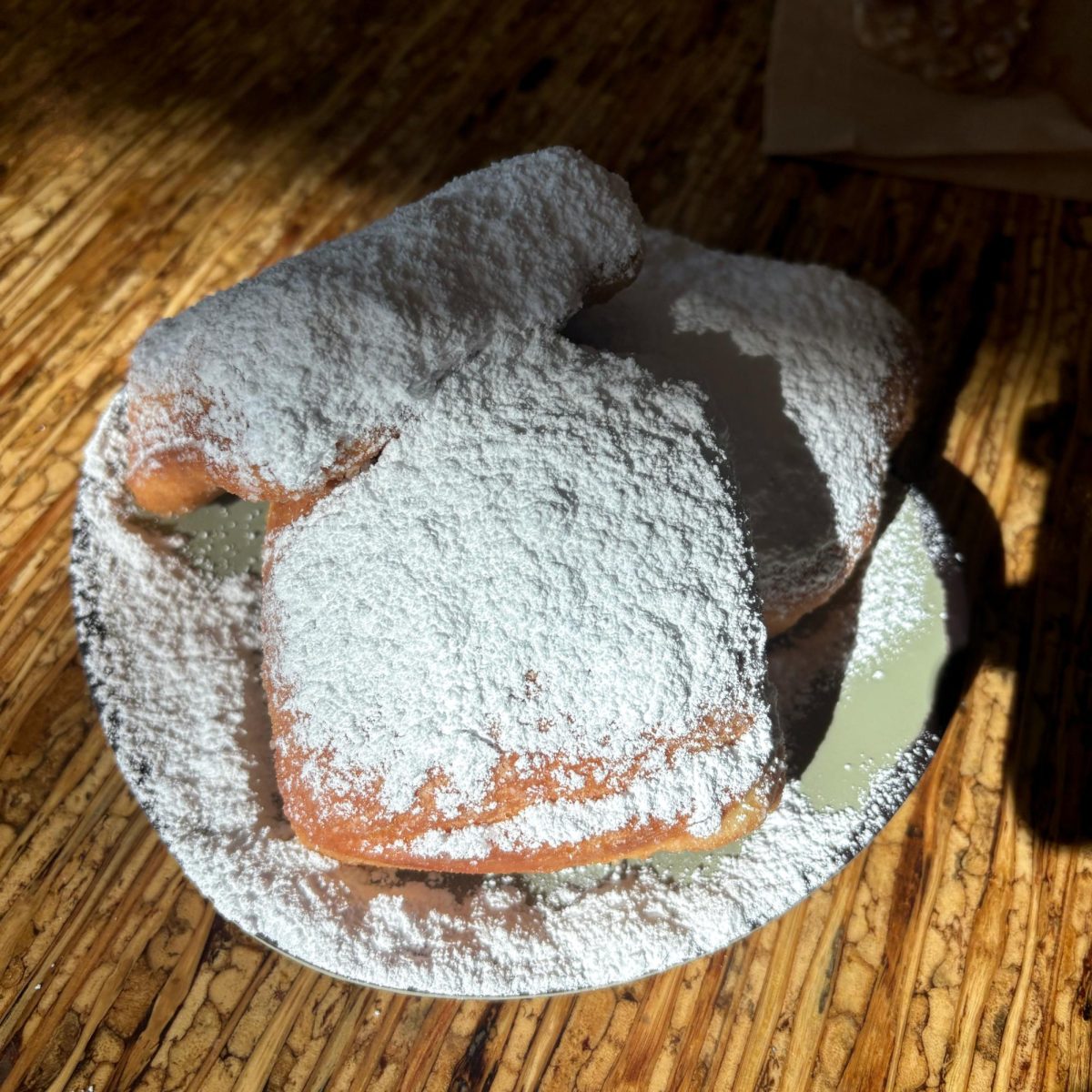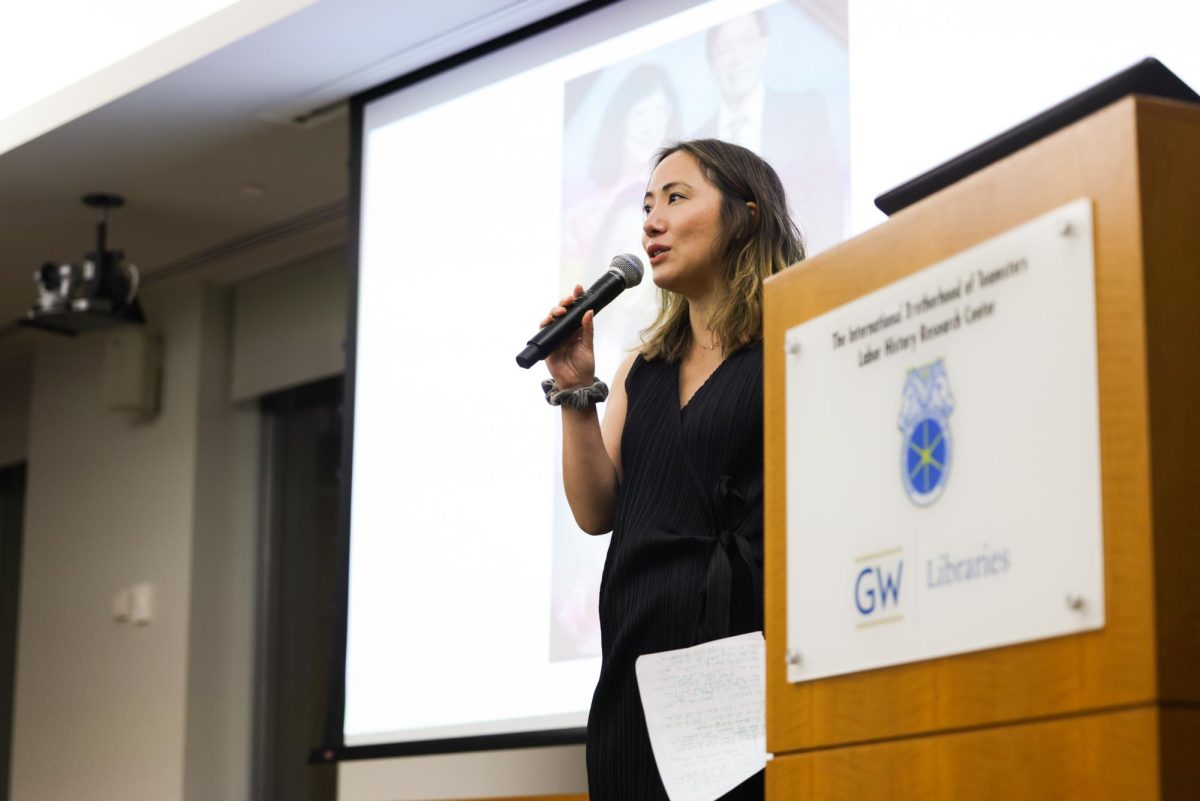
This post was written by Hatchet reporter Ana Cvetkovic.
Walking into the National Gallery of Art’s East Building entrance, visitors gravitate towards the first piece of art they see: nine carefully stacked mounds of stone resembling volcanoes.
The piece is “Roof” by British sculptor Andy Goldsworthy, and he will make an appearance at the gallery on Nov. 11 for the first time since installing Roof in 2005 for a lecture and book signing.
Goldsworthy’s claim to fame is creating formations out of natural materials, such as pinecones, icicles, leaves, rocks and sticks, usually in outdoor settings. His piece “Roof,” however, was commissioned for an urban environment.
“[Roof] bridges a gap between the exterior and the interior,” explains Molly Donovan, associate curator of modern art at the National Gallery. “In doing so, it addresses other binary concepts like nature and culture, nature being outdoors and culture being the interior of the museum space.”
Goldsworthy remained true to his style by placing these slate domes only partially indoors. Most of the work is found on the exterior of the north side of the National Gallery’s East Building.
Donovan co-authored the Andy Goldsworthy Project, a book documenting the installation of Roof from conception to completion.
In past lectures, Goldworthy has spoken about his projects in the works. Donovan predicted he may say something about Roof’s companion piece, which Goldsworthy recently created for the Saint Louis Art Museum. The piece is titled Stone Sea and is made up of 25 limestone arches.
Goldsworthy is considered a maverick in his field, according to Donovan. “His work operates independently of theorized discourses. His style is more intuitive than theoretical,” she says.
Nov. 11 at noon, National Gallery of Art, East Building Concourse, Auditorium, free.



